Burns (and sunburns)
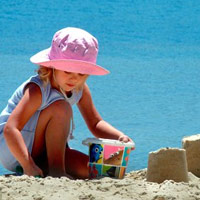 Burns are subdivided into three categories depending upon the depth of the burn – first degree, second degree and third degree. The first steps of burn care do not depend upon the degree of burn and should be followed for any burn. And every burn, after it heals, leaves behind skin that is more sensitive for 6-12 months, so sunscreen and protection are vital to prevent sunburns and scarring.
Burns are subdivided into three categories depending upon the depth of the burn – first degree, second degree and third degree. The first steps of burn care do not depend upon the degree of burn and should be followed for any burn. And every burn, after it heals, leaves behind skin that is more sensitive for 6-12 months, so sunscreen and protection are vital to prevent sunburns and scarring.
Immediate care/Step One:
Cool the skin – use as much cold water as soon as you can. NO ICE – ice can further damage the sensitive skin. Do not use grease/Crisco/butter/oil – all of which will worsen a burn. Stopping the heat will help stop the progression of the burn. Hold a burned hand under a faucet of cold running water, or in a sink filled with cold water. Remove any jewelry in the affected area – take rings off of fingers, bracelets off of wrists. If clothing is hot, first cool the clothing then remove and cool the skin underneath- a cool bath is the best way to cool body burns, and is important despite your child’s protests. Stopping the burn needs to be your priority. Submerge body part and cool the skin for at minimum 20 minutes. Facial burns – use a cold and very wet washcloth, hold over burned area, re-wet with cold water and re-apply every 2-3 minutes, for 20 minutes.
Step Two
Pain Control: Give your child a dose of Acetaminophen or Ibuprofen (see mediation dosing page).
Evaluate: Now is the time to figure out how severe the burn is.
First degree: Skin will be red, dry and painful (like a sunburn)
Second degree: Skin will be swollen, wet, painful and blistered.
Third degree: Skin will be blackened, or white, dry, possibly swollen, and these areas will be pain free (this is the deepest burn and nerves are damaged). If there are second degree burns around the edges those will still be painful.
Step Three- Home Treatment
First degree & Sunburns: First degree burns do not need medical attention and do not leave scars. Leave open to air whenever possible. If a first degree burn begins to blister, it has become a second degree burn, so treat accordingly.
Home Remedies:
- 100% aloe gel- Apply to the burned area as often as you can to soothe and help heal. Continue for 2-3 days. Great treatment for larger first degree burns.
- A slice of raw potato (juicy piece) – Rub gently over burned area on the first day of the burn. OK for a small area.
- Toothpaste – Apply a coating over burned area on the first two days of the burn. Good for a small area.
- Vitamin E Oil – Apply over burned area (after you have thoroughly cooled the area for at least 20 minutes) for two to three days.
- 2nd Skin – A sterile moist non-stick pad you can use to cover and cool the affected area.
Second degree: Do not break blisters. Treatment is the same if blisters are open or closed, but open blisters are more susceptible to infection. Cover burned area with antibiotic ointment (ex: Neosporin/polysporin) followed by a non-stick pad and wrap with gauze. Call your doctor during regular office hours. S/he may prescribe a specialized burn antibiotic cream, silver sulfadiazine (Silvadene), to prevent infection and promote healing.
Home care- twice a day: rinse, apply a thick layer of antibiotic cream/ointment, cover with a clean, non-stick pad, wrap with gauze.
Third degree: After cooling do not apply any creams or ointments. Cover with a wet cloth (be sure that it is clean and soft/smooth- a pillowcase or similar) and go to the nearest emergency room.
Call your doctor during normal office hours if:
Your child has a second degree burn.
Pain is still present after 48 hours.
Call/See a doctor immediately if the burn:
- Occurs on a child less than 6 months of age.
- Covers a large part of the body – The entire chest, stomach, back or an extremity.
- Encircles an arm or a leg.
- Is a second degree burn on the face, over a joint, on the hands, feet or genitals.
- Is electrical – the burn from a shock can be worse than it appears.
- If your child shows signs of infection: pus, foul smell, red streaks extending from the burned area, and/or fever.
- If your child has a third degree burn you should go directly to the emergency room.
-Monique Araya, MD, FAAP
The medical information on this Web site is provided for educational purposes only. The information provided in this site, or through linkages to other sites, is not a substitute for medical or professional care, and you should not use the information in place of a visit, call consultation or the advice of your physician or other healthcare provider.
If you believe you have a medical emergency you should call 911 or your physician immediately. If you have any questions regarding your health or a medical condition, you should promptly consult your physician.
- Accidental Poisoning
- Bites and Stings
- Burns (and sunburns)
- Childhood Asthma
- Colic and Crying Babies
- Constipation in Children
- Cough & Cold
- Diaper Rash
- Diarrhea
- Ear Pain
- Fever
- Head Trauma and Head Injuries
- Kids and Allergies
- Lice
- Medication Dosages
- Nosebleeds in Children
- Pink Eye and Styes
- Rash
- Scrapes, Cuts and Stitches
- Sudden/Acute Abdominal Pain
- Treating a Common Cold Cough
- Vomiting and Nausea
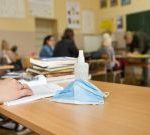 High Viral Loads Make Kids ‘Silent Spreaders’ of COVID-19
High Viral Loads Make Kids ‘Silent Spreaders’ of COVID-19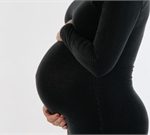 Clotting Tied to COVID-19 May Harm the Placenta
Clotting Tied to COVID-19 May Harm the Placenta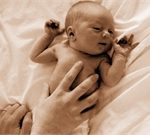 ‘Kangaroo Care’ Has Big Health Benefits For Preemies
‘Kangaroo Care’ Has Big Health Benefits For Preemies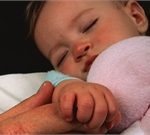 Babies Are Spared Severe COVID-19 Symptoms
Babies Are Spared Severe COVID-19 Symptoms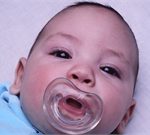 Sleepless Babies May Face Emotional Troubles as Kids
Sleepless Babies May Face Emotional Troubles as Kids